Complete Guide to Halloween Tattoos: Spooky Designs, Ideas, and Inspiration for 2025
- Leonardo Pereira
- Apr 8
- 30 min read
Halloween tattoos have surged in popularity over the past decade, with more people embracing permanent tributes to this beloved holiday. From classic jack-o'-lanterns to elaborate haunted scenes, Halloween-inspired body art offers a unique way to celebrate the spooky season year-round. This comprehensive guide explores everything you need to know about Halloween tattoos, including popular designs, placement options, color considerations, and finding the right artist for your spooky ink.
Whether you're a dedicated Halloween enthusiast or simply appreciate the aesthetic of the macabre, Halloween tattoos provide a perfect blend of playfulness and edge. The growing trend of seasonal tattoos has made October a particularly busy month for tattoo artists specializing in horror and Halloween designs, with many shops offering special Halloween flash events and promotions during the spooky season.
In this guide, we'll dive deep into the world of Halloween tattoos, examining traditional and contemporary designs, discussing placement considerations, exploring color versus black and gray options, and providing essential tips for aftercare. We'll also share insights from professional tattoo artists who specialize in Halloween and horror-themed artwork, offering expert advice on bringing your spooky vision to life.
Table of Contents
Halloween tattoo designs encompass a wide range of iconic imagery associated with the holiday, from playful and cute to genuinely terrifying. The most popular Halloween tattoo designs continue to evolve each year, with certain classics remaining steadfast favorites while new trends emerge based on pop culture influences and artistic innovations.
Jack-o'-lanterns remain perhaps the most recognizable and frequently requested Halloween tattoo design. These carved pumpkins offer versatility in expression—they can be depicted with friendly, mischievous, or frightening faces, and artists can incorporate various styles from realistic to cartoon-inspired. Many tattoo enthusiasts choose jack-o'-lantern designs for their instant recognizability as Halloween symbols and the flexibility they offer in terms of size and placement. Small jack-o'-lantern tattoos work well on wrists or ankles, while larger, more detailed pumpkin designs can make striking statement pieces on thighs, backs, or full sleeves.
Witches and their associated imagery form another cornerstone of Halloween tattoo design. Witch tattoos can range from the stereotypical green-skinned hag with a pointed hat to more empowering, feminine interpretations that celebrate witchcraft as a symbol of female strength and independence. Related witch imagery—including broomsticks, cauldrons, spell books, and familiars like black cats—also makes for popular standalone designs or elements within larger Halloween compositions. The witch aesthetic has seen particular growth in popularity among women seeking Halloween tattoos that blend spooky themes with feminist symbolism.
Haunted houses provide a perfect canvas for more elaborate Halloween tattoo designs. These architectural nightmares can incorporate multiple Halloween elements—from ghosts in windows to bats circling towers, cemetery grounds, and eerie lighting effects. Haunted house tattoos often tell a story within a single image, making them ideal for larger placements like the back, chest, or outer thigh. Artists specializing in architectural tattoos particularly excel at creating detailed haunted mansions with perspective and depth that draw the viewer into their spooky world.
Ghosts, skeletons, and other supernatural entities round out the classic Halloween tattoo design repertoire. Ghost tattoos range from the traditional white-sheet specters to more artistic interpretations of the afterlife. Skeleton tattoos—whether anatomically correct or stylized—symbolize mortality while maintaining strong Halloween associations. Zombies, vampires, werewolves, and other monsters from horror folklore also make popular Halloween tattoo subjects, often incorporating elements from classic films or literature for added personal significance.
Movie-inspired Halloween tattoos have grown exponentially in popularity, with iconic horror film characters becoming staples in Halloween tattoo portfolios. Figures like Michael Myers from "Halloween," Freddy Krueger from "A Nightmare on Elm Street," and characters from Tim Burton films like "The Nightmare Before Christmas" frequently appear in Halloween tattoo collections. These designs appeal particularly to those who want to combine their love of Halloween with appreciation for horror cinema, creating pieces that reference both the holiday and beloved films simultaneously.
Modern Halloween tattoo designs increasingly incorporate unique twists on traditional imagery, such as cute or "kawaii" interpretations of typically frightening subjects. Adorable versions of skulls, bats, spiders, and other Halloween creatures appeal to those who want to celebrate the playful side of the holiday rather than its scarier aspects. This trend toward cute Halloween tattoos has opened the door for more people to embrace spooky-season ink without committing to genuinely frightening imagery, broadening the appeal of Halloween tattoos beyond hardcore horror enthusiasts.
Halloween Tattoo Styles and Techniques

The artistic style chosen for a Halloween tattoo dramatically influences its final appearance and impact. From traditional American to hyper-realistic, each tattoo style brings different qualities to Halloween imagery, affecting how the design communicates its spooky essence. Understanding these stylistic approaches helps clients make informed decisions when planning their Halloween-themed body art.
Traditional American (Old School) tattoo style offers bold lines, limited but vibrant color palettes, and simplified designs that have defined classic tattooing for generations. When applied to Halloween subjects, this style creates instantly recognizable, graphic representations with strong visual impact and excellent longevity. Jack-o'-lanterns, bats, black cats, and witches rendered in traditional style feature thick outlines, flat colors, and minimal shading—creating pieces that remain clear and vibrant for decades. The limited detail of traditional work means these tattoos often age better than more intricate styles, maintaining their Halloween spirit through years of wear. Artists specializing in traditional tattooing excel at distilling complex Halloween concepts into bold, timeless designs that capture the holiday's essence without unnecessary complexity.
Neo-traditional style builds upon traditional foundations while incorporating more detailed shading, expanded color palettes, and greater dimension. This approach works exceptionally well for Halloween tattoos, allowing for more nuanced expressions and atmospheric elements while maintaining the graphic strength of traditional work. Neo-traditional Halloween tattoos often feature dramatic lighting effects—like the glow of a jack-o'-lantern or moonlight illuminating a haunted scene—that create mood and depth. The style's characteristic color saturation makes autumn hues particularly vibrant, with oranges, purples, and greens popping dramatically against black backgrounds. For clients seeking Halloween tattoos with visual impact and moderate detail, neo-traditional offers an excellent balance between boldness and nuance.
Realism and hyper-realism techniques create Halloween tattoos with photographic quality, perfect for capturing the textural details of rotting pumpkins, weathered tombstones, or the intricate architecture of haunted houses. These technically demanding styles require exceptional artistic skill but deliver stunning results that appear three-dimensional on the skin. Realistic Halloween portraits—whether of classic movie monsters, horror icons, or original spooky characters—showcase incredible detail in facial expressions and lighting effects. The style particularly excels at creating atmospheric Halloween scenes with fog, moonlight, and environmental elements that establish mood and context. While these tattoos require longer sessions and typically higher investment, they create show-stopping Halloween pieces with unparalleled visual impact.
Illustrative style blends elements of traditional tattooing with techniques from illustration, creating Halloween designs with both graphic strength and artistic flair. This versatile approach works well for storybook-inspired Halloween imagery, fairy tale witches, or stylized spooky scenes that balance detail with readability. Illustrative Halloween tattoos often incorporate decorative elements like ornate frames, text banners, or botanical details that enhance the design's overall composition. The style accommodates both color and black-and-gray approaches effectively, making it adaptable to various preferences and placement considerations. For Halloween enthusiasts seeking tattoos with a distinctive artistic quality beyond traditional flash designs, illustrative work offers creative flexibility while maintaining excellent longevity.
Blackwork and dotwork techniques have gained significant popularity for Halloween tattoos, particularly for designs emphasizing shadow, silhouette, and negative space. These approaches use only black ink in varying densities to create dimension and contrast—perfect for moonlit Halloween scenes, shadowy figures, or spectral apparitions. Blackwork Halloween tattoos often feature stark contrasts between solid black elements and untouched skin, creating dramatic visual impact with minimal color. Dotwork (stippling) techniques build Halloween images through thousands of individual dots, creating ethereal, ghostly qualities perfect for supernatural subjects. These styles work exceptionally well for clients seeking Halloween tattoos with a more subtle, artistic approach that doesn't rely on traditional holiday colors but still captures the spooky essence of the season.
Watercolor techniques bring a dreamlike, ethereal quality to Halloween tattoos, with colors that blend and flow in ways that mimic painted illustrations. This style works beautifully for creating atmospheric Halloween backgrounds, bleeding moonlight, or the misty surroundings of haunted locations. Watercolor Halloween tattoos often combine solid black linework for structure with flowing color elements that add dimension and mood. The style's characteristic color bleeds and splatters can suggest blood, magical energies, or supernatural phenomena—all relevant to Halloween imagery. While traditionally associated with brighter color palettes, watercolor techniques also work effectively with the more subdued autumn colors of Halloween designs, creating pieces with both seasonal appropriateness and artistic distinction.
Best Placement Options for Halloween Tattoos

Choosing the optimal placement for a Halloween tattoo involves considering visibility, available canvas size, pain tolerance, and how the design interacts with body contours. Different Halloween designs suit different body locations, with certain placements enhancing specific spooky elements or allowing for seasonal display options.
Forearm placements remain consistently popular for Halloween tattoos, offering excellent visibility and a canvas size that accommodates most medium-sized designs. The flat surface of the forearm allows for detailed Halloween scenes to be rendered without distortion, while the location ensures the wearer can easily appreciate their own tattoo. Inner forearm placements work particularly well for Halloween designs meant primarily for personal enjoyment, while outer forearm tattoos provide more public visibility. The forearm's relatively moderate pain level makes it accessible for first-time tattoo clients, and its shape naturally accommodates elongated Halloween designs like broomsticks, coffins, or vertical haunted houses. Many Halloween enthusiasts choose forearm placements specifically because they can be easily displayed during the autumn season but covered with long sleeves in professional environments when necessary.
Leg placements offer expansive canvas options for larger, more detailed Halloween compositions. The thigh provides one of the body's largest flat surfaces, ideal for elaborate haunted scenes, full moon landscapes, or Halloween-themed portraits. Calf placements work well for vertical Halloween designs like standing skeletons, witches, or tombstones, with the natural muscle contour adding dimension to the artwork. Ankle and foot placements suit smaller Halloween elements like tiny bats, spiders, or crescent moons—perfect for those wanting subtle nods to the spooky season. The varying pain levels across leg regions (with ankles and feet being more sensitive than calves or thighs) allow clients to choose placements that align with their tolerance while still achieving their desired Halloween aesthetic.
Back and chest placements provide premium canvas space for showcase Halloween tattoos with multiple elements or scenes. These locations accommodate the largest and most detailed Halloween compositions—full graveyards, elaborate haunted mansions with surrounding landscapes, or Halloween-themed sleeves that wrap around shoulders and upper arms. The back particularly excels for horizontal designs like panoramic haunted landscapes or symmetrical Halloween imagery. While these placements involve greater commitment in terms of session length and coverage, they allow for truly spectacular Halloween pieces that incorporate numerous elements into cohesive compositions. The relative privacy of these locations also makes them suitable for more intense or frightening Halloween imagery that might be too extreme for visible everyday placements.
Hand and finger tattoos have gained popularity for Halloween designs, particularly small, simple elements like tiny pumpkins, bats, or spiders. These highly visible placements create instant conversation starters and allow for creative placement interactions—like spiders appearing to crawl across knuckles or a small moon nestled in the space between thumb and forefinger. The limited space necessitates simplified Halloween imagery, but creative artists can design miniature spooky elements that maintain their clarity despite the size constraints. It's worth noting that hand and finger tattoos typically fade faster than other placements due to frequent washing and sun exposure, sometimes requiring touch-ups to maintain their Halloween vibrancy. These locations also tend to be more painful and may have professional implications in certain work environments, making them better suited for those already established in tattoo-friendly careers or with existing tattoo collections.
Sternum and ribcage placements create dramatic opportunities for Halloween designs that interact with the body's natural anatomy. Symmetrical Halloween compositions centered on the sternum—like bats with spread wings, elaborate spider webs, or ornate Halloween-themed mandalas—work with the body's natural centerline to create balanced, impactful designs. The curved surface of the ribcage accommodates wraparound Halloween scenes that appear to embrace the wearer. While these areas involve higher pain levels than many other placements, they create striking, intimate Halloween tattoos that can remain private or be selectively revealed. The sternum particularly suits Halloween designs with central focal points like skulls, pumpkins, or geometric arrangements of Halloween elements.
Neck and face placements represent the most committed options for Halloween tattoos, with high visibility and significant social implications. Small Halloween elements behind the ear—like tiny bats, crescent moons, or spiders—offer a balance of visibility and discretion, revealed only with certain hairstyles. More visible neck placements suit clients fully committed to their Halloween aesthetic, often chosen by those already extensively tattooed or working in creative industries. These high-visibility placements demand simplified, bold Halloween imagery that reads clearly from a distance and maintains its integrity despite the challenging canvas. While face tattoos of Halloween elements remain relatively rare, they represent the ultimate commitment to spooky season symbolism, typically chosen only by the most dedicated Halloween enthusiasts or professionals within the tattoo and alternative fashion industries.
Color vs. Black and Gray Halloween Tattoos

The choice between color and black and gray for Halloween tattoos significantly impacts both aesthetic and practical considerations. Each approach brings different strengths to Halloween imagery, influencing how effectively the design captures the holiday's spirit and how well it ages over time.
Color Halloween tattoos embrace the holiday's iconic palette, with orange pumpkins, purple night skies, green witch faces, and blood red accents creating instantly recognizable seasonal imagery. These vibrant pieces capture the festive, celebratory aspect of Halloween, with autumn colors establishing immediate associations with the October holiday. Color works particularly well for traditional and neo-traditional Halloween designs, where flat color fields and limited shading create bold, graphic representations of jack-o'-lanterns, candy corn, and other Halloween staples. The contrast between bright orange elements and black backgrounds creates the pop and visibility that many clients seek in their Halloween tattoos. Modern tattoo inks have improved significantly in longevity and vibrancy, allowing Halloween colors to maintain their impact for many years with proper care and sun protection.
Black and gray Halloween tattoos take a more subtle, timeless approach to spooky imagery, focusing on shadow, contrast, and detailed shading rather than color impact. This monochromatic style naturally evokes the noir aesthetic of classic horror films and vintage Halloween illustrations, creating an inherently eerie, atmospheric quality perfect for haunted houses, foggy graveyards, and supernatural entities. Black and gray techniques excel at creating dimension and texture in Halloween subjects—the weathered surface of tombstones, the gnarled bark of dead trees, or the shadowed recesses of a skull's eye sockets. These tattoos typically age more gracefully than color work, with less noticeable fading over decades, making them excellent choices for clients prioritizing longevity in their Halloween body art. The style's subtlety also allows for more workplace-friendly Halloween tattoos that maintain their spooky essence without the immediate attention drawn by bright orange and purple designs.
Grayscale with selective color represents a compelling compromise for Halloween tattoos, using limited color accents to highlight key elements while maintaining the sophisticated shading of black and gray work. This approach might feature a primarily grayscale haunted house scene with just the orange glow of jack-o'-lanterns in the windows, or a black and gray witch with only her green face or glowing potion highlighted in color. The technique creates striking visual focus, drawing the eye directly to the most significant Halloween elements while allowing the surrounding composition to provide context and atmosphere. This balanced approach often ages better than full-color pieces while still incorporating the iconic Halloween hues that make the seasonal association unmistakable.
UV (blacklight reactive) ink adds an interactive dimension to Halloween tattoos, creating designs that transform under ultraviolet light to reveal hidden elements or glow with eerie luminescence. While visible normally, these tattoos take on new dimensions in blacklight environments, with certain inks glowing bright green, purple, or blue—colors already associated with Halloween aesthetics. This technique particularly suits ghost tattoos that appear to glow ethereally, potions that seem to radiate magical energy, or hidden messages that only appear under specific lighting conditions. The interactive nature of these tattoos connects conceptually with Halloween's tradition of transformation and things not being what they seem. However, clients should note that UV inks have more variable longevity than standard tattoo pigments, and some people experience higher rejection rates with these specialized formulations.
White ink and negative space techniques create subtle, ghostly Halloween tattoos that appear as pale apparitions against the skin. White ink ghosts, delicate cobwebs, or spectral figures emerge with a barely-there quality that aligns perfectly with supernatural themes. These designs work best on fair to medium skin tones, as the white ink provides less contrast on darker skin. The subtle nature of white ink Halloween tattoos makes them appropriate for professional environments while still allowing the wearer to maintain their connection to spooky aesthetics. These pieces often appear to change throughout the healing process and with sun exposure, sometimes developing a slightly raised texture that adds a tactile dimension to ghostly designs. While not as immediately visible as black or color work, white ink Halloween tattoos offer a unique, ethereal quality particularly suited to the more supernatural aspects of the holiday.
Aging considerations play an important role in the color decision for Halloween tattoos. All tattoos change over time, but color and black and gray work age differently. Bright Halloween colors—particularly orange, which often contains yellow pigments—typically require more maintenance and touch-ups to maintain their vibrancy over decades. Black and gray Halloween designs generally maintain their integrity longer, with contrast gradually softening but overall readability remaining strong. This aging difference leads many tattoo artists to recommend simplified color designs for Halloween tattoos intended to last decades without significant maintenance, focusing on strong shapes and limited color fields rather than intricate details in vibrant hues. Placement also affects color longevity, with Halloween tattoos on sun-exposed areas like forearms requiring more diligent sunscreen application to prevent premature fading of those signature orange pumpkins and purple skies.
Seasonal Considerations and Timing

The timing of Halloween tattoo appointments involves both practical and symbolic considerations, with demand patterns, healing timelines, and personal significance all influencing when clients choose to get their spooky ink.
October appointment demand creates significant challenges for those seeking Halloween tattoos during the spooky season itself. Professional tattoo artists report that Halloween designs see a dramatic spike in requests during September and October, with many popular artists booking Halloween-specific appointments months in advance. This seasonal demand means spontaneous Halloween tattoo decisions during the actual holiday season often face limited artist availability, particularly for more complex or larger designs. Many tattoo studios capitalize on this seasonal interest by offering Halloween flash events—pre-designed Halloween tattoos available on a first-come, first-served basis, typically at special pricing. While these events provide opportunities for last-minute Halloween tattoos, they limit customization options compared to standard appointments. Clients seeking custom Halloween designs from sought-after artists should typically begin consultation conversations in summer to ensure October appointment availability.
Healing considerations play an important role in Halloween tattoo timing, particularly for those wanting fully healed pieces to display during Halloween events. Fresh tattoos require protection from sun exposure, submersion in water, and excessive sweating—activities that might conflict with October festivities like pumpkin picking, apple bobbing, or costume wearing. The initial healing phase typically takes 2-3 weeks, during which the tattoo requires careful aftercare and protection from irritation. For optimal Halloween display, many artists recommend scheduling appointments in early September, allowing sufficient healing time before Halloween parties and events. This timeline ensures the tattoo has progressed beyond the sensitive scabbing phase and reached the stage where it can be safely exposed (though still protected from direct sunlight) during costume events and holiday celebrations.
Off-season advantages make non-October appointments attractive for many Halloween tattoo enthusiasts. Scheduling Halloween-themed tattoos during quieter months—particularly January through March—often means greater artist availability, more flexible scheduling, and sometimes even better pricing due to reduced demand. Many tattoo artists appreciate the opportunity to work on Halloween designs outside the October rush, allowing them to dedicate more time and creative energy to each piece without the pressure of packed seasonal schedules. Clients seeking elaborate custom Halloween tattoos particularly benefit from this approach, as complex designs require more consultation and planning than might be feasible during the busy autumn season. Additionally, fully healing a Halloween tattoo during winter months eliminates concerns about sun exposure during the vulnerable early healing stages.
Anniversary and meaningful date considerations lead some clients to schedule Halloween tattoos to commemorate specific events rather than align with the calendar holiday. Halloween tattoos marking the birth or death of loved ones, relationship anniversaries, or personal milestones create deeper significance beyond seasonal decoration. These meaningful date associations often take precedence over seasonal timing, with clients choosing appointment dates that honor the commemorative aspect of their Halloween imagery rather than focusing on having the tattoo completed for October display. Artists report that these commemorative Halloween tattoos tend to incorporate more personalized elements and custom symbolism than purely decorative seasonal pieces, often blending Halloween imagery with specific references meaningful to the client's relationship with the person or event being memorialized.
Multi-session planning becomes necessary for larger or more complex Halloween tattoos that cannot be completed in a single sitting. Full Halloween sleeves, large back pieces featuring elaborate haunted scenes, or highly detailed realistic portraits of horror characters typically require multiple appointments spaced several weeks apart to allow for healing between sessions. For these major projects, timing considerations extend beyond a single season, with initial outlining sometimes beginning a year or more before the final details are completed. Clients planning showcase Halloween pieces should discuss realistic timelines with their chosen artist, understanding that the most impressive Halloween tattoos often represent months of cumulative work rather than single-session projects. This extended timeline means beginning the conversation about significant Halloween tattoos well in advance of when you hope to have the completed piece.
Seasonal tattoo collections lead some enthusiasts to develop ongoing relationships with artists, adding new Halloween elements each year to create evolving spooky galleries on their skin. This approach treats Halloween tattoos as annual traditions rather than one-time events, with clients returning each year for new additions that complement their existing collection. These seasonal collectors often work with the same artist over many years, developing cohesive Halloween themes that grow more elaborate with each addition. For these dedicated Halloween tattoo enthusiasts, the timing becomes part of the tradition itself, with annual appointments scheduled as regular celebrations of their commitment to spooky aesthetics. This approach allows for the development of impressive Halloween-themed sleeves or body sections that tell evolving stories through accumulated imagery, creating more comprehensive Halloween statements than single tattoos could achieve.
Finding the Right Artist for Your Halloween Tattoo

Selecting the ideal artist for a Halloween tattoo significantly impacts the final result, with different artistic specialties, communication styles, and studio environments all influencing the experience and outcome. This critical decision deserves careful consideration and research.
Portfolio specialization provides the most reliable indicator of an artist's suitability for specific Halloween designs. When evaluating potential artists, look beyond general skill to identify those with demonstrated experience in the particular Halloween elements you want—whether that's realistic pumpkins, stylized witches, or atmospheric haunted scenes. Many artists develop specialties within the Halloween genre, becoming known for specific approaches like cute Halloween characters, horror movie portraits, or traditional Halloween flash. Review multiple examples of similar work in their portfolio, paying attention to line quality, color saturation, healing results (if shown), and consistency across different pieces. The best Halloween tattoo artists typically display a passion for the spooky season in their portfolio, with numerous examples of Halloween work that show their understanding of the holiday's aesthetic and symbolism.
Style matching creates harmony between your Halloween concept and the artist's natural strengths. An artist who excels at photorealistic portraits might not be the ideal choice for a stylized, cartoon-inspired jack-o'-lantern, regardless of their technical skill. Similarly, an artist specializing in traditional American tattoos might not deliver the atmospheric detail you want in a haunted house scene. Review artists' work to identify whose natural style aligns with your Halloween vision, looking for examples that capture the mood and aesthetic you're seeking. This alignment between concept and artistic strength leads to more successful collaborations, with artists bringing their best capabilities to designs that showcase their particular talents. Many tattoo artists maintain Instagram accounts or online portfolios organized by style categories, making it easier to identify those whose approach matches your Halloween tattoo goals.
Consultation quality reveals much about the potential working relationship with an artist. During initial discussions about your Halloween tattoo, notice how the artist responds to your ideas—do they listen attentively, ask thoughtful questions, and offer constructive suggestions that enhance your concept? The best artists for Halloween work demonstrate enthusiasm for spooky themes while providing honest feedback about what will translate effectively to skin. They should explain their approach to specific Halloween elements, discuss color and composition options, and address any technical considerations relevant to your design. Red flags include artists who seem disinterested in your Halloween concept, dismiss your input without explanation, or cannot articulate how they would approach the technical aspects of your design. The consultation sets the tone for the entire experience, so ensure you feel comfortable with the artist's communication style and creative approach before proceeding.
Technical expertise specific to Halloween imagery involves understanding how certain elements translate to skin and age over time. Experienced Halloween tattoo artists know which techniques best create the illusion of glowing pumpkins, how to render moonlight through bare tree branches, or which approaches most effectively capture the texture of cobwebs or tombstones. They understand how to use negative space to create fog effects, how to build dimension in spooky architectural elements, and how to ensure that fine details in Halloween scenes will remain legible as the tattoo ages. During consultations, knowledgeable artists will explain these technical considerations, sometimes suggesting modifications to your concept that will improve its longevity and impact. This specialized knowledge becomes particularly important for complex Halloween scenes with atmospheric elements or designs incorporating subtle spooky details that require specific techniques to execute effectively.
Studio atmosphere contributes significantly to the Halloween tattoo experience, with some environments better suited to spooky work than others. Many artists who specialize in Halloween and horror designs create studio spaces that reflect this aesthetic, with décor and music that enhance the thematic immersion during your session. While not essential to technical quality, this environmental alignment can make the experience more enjoyable and authentic for dedicated Halloween enthusiasts. Some studios even host special Halloween events or decorative transformations during the autumn season, creating memorable tattooing experiences that extend beyond the artwork itself. For clients who view their Halloween tattoo as not just body art but a meaningful ritual or celebration, finding a studio that honors and enhances this significance through its atmosphere can add valuable dimensions to the experience.
Booking policies and availability vary significantly between artists, with those specializing in Halloween work often requiring longer lead times during the autumn season. Understanding an artist's typical waiting period, deposit requirements, and scheduling flexibility helps set realistic expectations for your Halloween tattoo timeline. Many sought-after Halloween specialists open their October books months in advance, sometimes with special booking procedures for seasonal appointments. Some artists also offer Halloween flash days with modified booking processes—first-come, first-served opportunities to receive pre-designed Halloween tattoos without the usual waiting period. Clarifying these policies during initial inquiries prevents disappointment and allows for proper planning, particularly if you hope to have your Halloween tattoo completed for specific seasonal events or celebrations.
Halloween Tattoo Aftercare Tips

Proper aftercare proves essential for Halloween tattoos, with special considerations for seasonal designs and timing that influence both healing processes and long-term results.
Initial healing protocols follow standard tattoo aftercare guidelines, with consistent cleansing, moisturizing, and protection forming the foundation of proper care. For the first 2-3 days, gently wash your Halloween tattoo with fragrance-free antibacterial soap 2-3 times daily, patting dry with clean paper towels rather than rubbing with cloth that might leave fibers on the healing skin. Apply a thin layer of recommended aftercare product—whether a specialized tattoo ointment or simple fragrance-free moisturizer—to keep the area hydrated without oversaturating. Avoid submerging the tattoo in water, including baths, pools, hot tubs, and natural bodies of water, which can introduce bacteria and extract ink during the vulnerable early healing stage. Keep the tattoo protected from direct sunlight, tight clothing that might cause friction, and environments with excessive dirt or bacteria that could lead to infection. These fundamental practices apply to all tattoos but become particularly important for Halloween designs intended for display during October events.
Seasonal challenges create unique considerations for Halloween tattoos healing during autumn activities. October typically involves outdoor festivities like pumpkin patches, hayrides, corn mazes, and haunted houses—environments that may expose healing tattoos to dirt, hay, artificial fog, and other potential irritants. Clients with fresh Halloween tattoos should either postpone such activities until healing progresses beyond the vulnerable open-wound stage (typically 2 weeks) or take extra precautions like covering the tattoo with sterile bandages and protective clothing. Halloween costumes present another potential complication, as makeup, prosthetics, and costume materials may irritate healing skin or introduce bacteria. If your Halloween tattoo will still be healing during costume events, choose outfits that don't contact the tattooed area or create excessive sweating that might affect healing. These seasonal factors make timing particularly important for Halloween tattoos, with many artists recommending appointments at least one month before any major Halloween celebrations where you hope to display your fresh ink.
Color preservation becomes especially important for Halloween tattoos featuring the holiday's signature orange, purple, and green hues. These vibrant colors—particularly orange, which often contains yellow pigments—typically fade faster than black and gray work when exposed to sunlight. Once your Halloween tattoo completes the initial healing process (approximately 4 weeks), diligent sunscreen application becomes essential for preserving those bright pumpkin oranges and eerie purple skies. Use broad-spectrum SPF 50+ sunscreen on your Halloween tattoo whenever it will be exposed to UV light, even on cloudy days and during winter months when UV damage still occurs despite less intense sunshine. This protection proves particularly important for Halloween tattoos on typically exposed areas like forearms, which might receive significant cumulative sun exposure during daily activities. Some clients choose to cover their Halloween tattoos with UV-protective clothing during extended outdoor activities, providing more reliable protection than sunscreen alone.
Long-term maintenance ensures your Halloween tattoo remains vibrant and clear for many Octobers to come. Beyond sun protection, keeping the skin well-hydrated year-round helps maintain color saturation and prevent the cracking or fading that can affect tattoo appearance. Regular moisturizing with fragrance-free lotions keeps tattooed skin supple and healthy, allowing Halloween designs to age gracefully. Avoid harsh exfoliants, chemical peels, and other aggressive skincare treatments on tattooed areas, as these can prematurely fade or blur your Halloween imagery. Some clients schedule periodic "refresher" sessions every few years to touch up any faded areas in their Halloween tattoos, particularly for designs with fine details or bright colors that show wear more quickly than bold black elements. These maintenance sessions typically require less time and investment than the original tattoo while significantly extending its visual impact and clarity.
Seasonal display considerations lead many Halloween tattoo enthusiasts to develop specific routines for showcasing their spooky ink during October. Some clients apply temporary enhancements around their permanent Halloween tattoos during the season—like washable UV-reactive paint that makes elements glow under blacklight at Halloween parties, or complementary temporary tattoos that expand their permanent design for special events. Others coordinate Halloween costumes specifically to highlight their tattoos, choosing outfits that frame or thematically connect with their permanent artwork.
These seasonal display traditions transform Halloween tattoos from static body art into interactive elements of annual celebrations, creating deeper connections between the permanent artwork and the holiday it commemorates. For many enthusiasts, these display rituals become as meaningful as the tattoos themselves, evolving into personal traditions that enhance their Halloween experience year after year.
Healing timeline expectations help clients plan appropriately for their Halloween tattoo journey. While individual healing varies based on placement, size, and personal factors, most Halloween tattoos follow a predictable recovery pattern. The initial inflammatory phase (days 1-3) brings redness, swelling, and seeping plasma that requires careful cleansing. The scabbing phase (days 4-10) creates temporary visual changes as the tattoo forms protective scabs that should never be picked or scratched, regardless of how tempting it might be to "help" the process along.
The peeling phase (days 7-14) reveals fresh skin underneath as scabs naturally detach, often accompanied by intense itching that must be addressed with gentle moisturizing rather than scratching. The milky phase (weeks 2-4) shows a slightly cloudy appearance as deeper skin layers continue healing. Finally, the settled phase (weeks 4-8) reveals the true appearance of your Halloween tattoo as all layers complete healing and colors reach their permanent saturation. Understanding this timeline helps set realistic expectations and prevents unnecessary concern during normal healing variations.
Halloween Sleeve Projects: Complete arm or leg sleeves dedicated to Halloween themes, showing how multiple elements can be combined into cohesive compositions.
Minimalist Halloween Designs: Simple, small Halloween tattoos that make an impact through clean execution and strategic placement.
Realistic Halloween Portraits: Photorealistic renderings of Halloween characters, creatures, and scenes that showcase technical mastery.
Blackwork Halloween Pieces: Monochromatic designs using only black ink to create dramatic Halloween imagery through contrast and negative space.
Halloween Color Bombs: Vibrant, colorful Halloween tattoos that maximize the holiday's signature orange, purple, and green palette.
Halloween Hand and Finger Tattoos: Small spooky elements placed on hands and fingers for high-visibility Halloween statements.
Combining Halloween Elements with Other Themes

Halloween tattoo designs frequently incorporate or blend with other thematic elements, creating personalized pieces that reflect multiple aspects of the wearer's interests and identity. These hybrid approaches expand the creative possibilities beyond straightforward holiday imagery.
Halloween and personal milestone combinations create deeply meaningful tattoos that commemorate significant life events through spooky symbolism. Birth and death dates incorporated into tombstone designs, anniversary dates hidden within haunted house windows, or memorial portraits framed with Halloween elements transform seasonal imagery into permanent tributes. These personalized Halloween tattoos often include subtle details meaningful only to the wearer—like a specific pumpkin carving pattern that references a family tradition, or a particular arrangement of bats that represents loved ones. The juxtaposition of celebratory Halloween imagery with commemorative elements creates a unique emotional resonance, allowing wearers to honor important memories through art that balances somber significance with the playful spirit of the holiday. Many clients report that these combination pieces help transform difficult anniversaries into more balanced occasions, with the Halloween elements adding warmth and nostalgia to what might otherwise be purely solemn remembrances.
Halloween and nature themes merge seamlessly in designs that incorporate seasonal flora and fauna with spooky elements. Autumn leaves swirling around jack-o'-lanterns, full moons rising over forest landscapes, or ravens perched on tombstones create natural Halloween scenes that extend beyond purely commercial holiday imagery. These nature-Halloween hybrids often appeal to those with broader interests in seasonal changes, wildlife, and the outdoors, creating pieces that remain relevant throughout autumn rather than solely during the Halloween season. The natural world provides rich symbolic parallels to Halloween themes—falling leaves representing transition and death, nocturnal creatures embodying mystery, and harvest imagery connecting to ancient seasonal celebrations that predate modern Halloween. Artists specializing in botanical tattoos often excel at these combinations, bringing their understanding of natural forms to Halloween imagery to create pieces with both seasonal specificity and broader natural resonance.
Halloween and literary references combine in tattoos that draw from the rich tradition of spooky literature and poetry. Quotes from Edgar Allan Poe surrounded by ravens and skulls, imagery from classic gothic novels like "Frankenstein" or "Dracula," or references to modern horror authors like Stephen King create intellectual Halloween pieces that honor both the holiday and literary traditions. These designs appeal particularly to book lovers who appreciate Halloween's connections to storytelling and imagination. The visual elements of such tattoos often incorporate book-related imagery—open pages, quill pens, or specific scenes from beloved stories—alongside traditional Halloween symbols. This approach creates layers of meaning that reward closer inspection, with designs that spark conversations about both Halloween traditions and literary influences. The enduring nature of classic spooky literature gives these tattoos timeless appeal beyond contemporary Halloween trends, connecting wearers to centuries of gothic storytelling traditions.
Halloween and cultural heritage combinations honor the holiday's diverse international roots and variations. Day of the Dead (Día de los Muertos) elements like sugar skulls and marigolds combined with traditional Halloween imagery create cross-cultural pieces that acknowledge the shared themes of ancestor remembrance across different traditions. Celtic Samhain symbols merged with modern Halloween elements connect contemporary celebrations to their ancient origins. These culturally informed Halloween tattoos often hold deeper significance for those with heritage connections to these traditions, creating permanent art that honors both family background and current celebrations. The visual richness of these combined cultural references often results in particularly striking tattoos, with the distinctive aesthetic elements of different traditions creating dynamic contrasts when thoughtfully integrated. Artists with knowledge of specific cultural symbolism can help ensure these combinations remain respectful and accurately represent the traditions being referenced.
Halloween and zodiac or astrological elements create mystical combinations that connect spooky imagery with personal star signs and cosmic symbolism. Scorpio symbols (representing those born during Halloween season) incorporated into Halloween designs, moon phases surrounding witch imagery, or astrological charts integrated with spooky elements appeal to those interested in both Halloween aesthetics and celestial influences. These cosmic-Halloween hybrids often employ similar color palettes and mysterious themes, creating natural stylistic harmony between the different symbolic systems. The connection between Halloween's supernatural associations and astrology's focus on unseen influences creates conceptual coherence in these combined designs. Many tattoo artists specializing in mystical and spiritual imagery excel at these combinations, bringing their understanding of both traditional Halloween symbolism and astrological iconography to create pieces with multiple layers of personal significance.
Halloween and music references combine in tattoos that celebrate both spooky aesthetics and musical passions. Imagery from horror-themed bands, lyrics from songs about Halloween or supernatural themes, or musical instruments incorporated into Halloween scenes create pieces that honor both artistic interests simultaneously. These music-Halloween hybrids range from subtle references recognizable only to fellow fans to explicit combinations featuring band logos or musician portraits with Halloween elements. The connection between certain music genres—particularly horror punk, gothic rock, and heavy metal—and Halloween aesthetics creates natural thematic bridges for these combined designs. The visual language of album art and band merchandise often already incorporates Halloween-adjacent imagery, making these combinations particularly cohesive. For many music enthusiasts, these tattoos commemorate the soundtrack to their Halloween celebrations, permanently linking the holiday's atmosphere with the music that enhances their seasonal experience.
The Cultural Significance of Halloween Tattoos

Halloween tattoos reflect and participate in broader cultural conversations about identity, tradition, and the evolving significance of body art in contemporary society. Beyond their decorative function, these permanent celebrations of the spooky season connect to deeper aspects of how we express ourselves and relate to seasonal traditions.
The year-round Halloween identity expressed through permanent tattoos represents a significant cultural shift in how people relate to the holiday. While Halloween was traditionally confined to October celebrations, the growing popularity of Halloween tattoos indicates an evolution toward embracing "spooky season" as a perpetual aesthetic and identity marker rather than a limited annual event. This permanent commitment to Halloween imagery allows enthusiasts to incorporate the holiday's playful macabre elements into their personal identity expression throughout the year. Sociologists studying contemporary tattoo culture note that Halloween tattoos often serve as public signals of the wearer's affinity for horror, gothic aesthetics, or countercultural perspectives that extend beyond seasonal celebration. The choice to permanently display Halloween imagery represents a deeper connection to the holiday's themes of transformation, the supernatural, and the playful exploration of mortality—concepts that resonate with many people's ongoing identity formation rather than just their October activities.
Generational differences in Halloween tattoo approaches reveal evolving relationships with both the holiday and tattoo culture. Older generations typically choose Halloween tattoos that reference classic holiday imagery from their childhood—vintage-style black cats, traditional witches on broomsticks, or classic movie monsters that evoke nostalgic connections to past celebrations. Millennials often select Halloween tattoos that blend nostalgic elements with pop culture references, particularly from 1990s Halloween media that defined their childhood experiences of the holiday. Gen Z clients frequently choose Halloween tattoos that incorporate social media influences, anime-inspired interpretations of Halloween imagery, or designs that playfully subvert traditional spooky elements. These generational patterns reflect broader changes in how different age groups relate to both Halloween traditions and self-expression through body art, with younger generations typically approaching both with greater flexibility and hybridization of influences.
Gender expression through Halloween tattoo choices has evolved significantly, moving beyond traditionally gendered Halloween imagery toward more personalized interpretations. Historically, Halloween tattoo designs often followed gendered patterns—"cute" or "sexy" Halloween elements for women versus more aggressive or frightening imagery for men. Contemporary Halloween tattoo trends show increasing crossover and rejection of these limitations, with clients of all genders embracing the full spectrum of Halloween imagery based on personal preference rather than social expectations. This evolution parallels broader cultural conversations about gender expression and identity, with Halloween's inherent themes of transformation and masquerade providing particularly fertile ground for exploring gender fluidity through permanent body art. Many tattoo artists report that Halloween designs specifically allow clients to explore aspects of their identity that might feel restricted in other contexts, with the holiday's association with fantasy and alternate personas creating permission for more expansive self-expression.
Professional implications of visible Halloween tattoos continue to evolve as workplace attitudes toward body art shift. While visible tattoos of any kind were once significant barriers to employment in many fields, changing cultural norms have created more acceptance for personal expression through body art, including Halloween-themed designs. Many Halloween enthusiasts strategically place their spooky tattoos to allow for workplace concealment when necessary while permitting display during personal time. Others deliberately choose visible Halloween tattoos as part of broader personal branding in creative industries where such expression may be valued rather than penalized. The increasing normalization of tattoos in professional environments has expanded opportunities for Halloween enthusiasts to incorporate their passion for the holiday into their permanent appearance without sacrificing career prospects. This evolution reflects broader cultural shifts toward greater acceptance of individual expression and recognition of the separation between personal aesthetic choices and professional capabilities.
Psychological comfort with mortality themes represents a significant aspect of Halloween tattoo appeal for many enthusiasts. Halloween imagery—with its playful incorporation of skulls, ghosts, and other death-related symbolism—provides a culturally sanctioned framework for engaging with mortality in a society that often avoids direct confrontation with death. Psychologists studying tattoo motivation note that Halloween-themed body art allows wearers to process existential concerns through aesthetically pleasing imagery that balances macabre elements with whimsy and tradition. This approach creates psychological distance that makes mortality contemplation more accessible and less threatening. Many clients report that their Halloween tattoos serve as personal memento mori (reminders of mortality) that paradoxically reduce anxiety by incorporating death awareness into everyday life through familiar, nostalgic imagery. The permanent nature of tattoos themselves—marks that will remain with the wearer throughout life—creates an additional layer of significance when combined with Halloween's themes of life cycles, transformation, and the thin boundary between different states of existence.
Community building through shared Halloween tattoo imagery creates connections between enthusiasts who recognize and appreciate each other's permanent commitment to the holiday. Halloween tattoo conventions, social media groups dedicated to spooky body art, and October tattoo events foster communities united by their love of both the holiday and its permanent representation on skin. These communities often extend beyond tattoo appreciation to encompass year-round celebration of horror, gothic aesthetics, and the playfully macabre. The visible nature of many Halloween tattoos facilitates instant recognition between community members in everyday encounters, creating spontaneous connections based on shared passion for the holiday's imagery and themes. For many enthusiasts, these community connections represent a significant benefit of their Halloween tattoos beyond the aesthetic value of the artwork itself. The growing popularity of Halloween tattoos has expanded these communities, creating increasingly diverse spaces where various interpretations of spooky season aesthetics can be shared and celebrated across different age groups, backgrounds, and tattoo styles.
Conclusion
Halloween tattoos represent a unique intersection of seasonal celebration, personal expression, and permanent art that continues to evolve in popularity and creative diversity. From traditional jack-o'-lanterns to elaborate haunted landscapes, these spooky designs offer endless possibilities for commemorating the holiday's distinctive aesthetic and atmospheric qualities.
The decision to get a Halloween tattoo involves numerous considerations—from design and placement to artist selection and timing—all influencing the final result and experience. By understanding the various styles, techniques, and approaches available for Halloween imagery, enthusiasts can make informed choices that align with their personal connection to the holiday and their broader tattoo goals.
Whether chosen as standalone seasonal tributes or incorporated into larger thematic collections, Halloween tattoos allow wearers to carry the spirit of spooky season with them throughout the year. The permanent nature of these designs transforms a traditionally temporary celebration into an enduring aspect of personal identity and self-expression.
As tattoo culture continues to evolve and Halloween itself adapts to changing social contexts, the relationship between these two forms of expression promises to generate ever more creative and meaningful interpretations of what it means to permanently embrace the spooky, the macabre, and the playfully frightening aspects of this beloved holiday tradition.
For those considering their first Halloween tattoo or adding to an existing collection of spooky ink, the key lies in finding the personal significance within the holiday's rich symbolic landscape—creating permanent art that resonates not just during October but throughout all seasons of life.
Popular Halloween Tattoo Designs
See More: ⤵
Nipple Tattoos: A Comprehensive Guide to Areola Reconstruction and Decorative Designs
Hip Tattoos: The Ultimate Guide to Choosing and Caring for Your Sexy Hip Ink
Divergent Tattoos: A Comprehensive Guide to Choosing, Placing, and Caring for Your Ink
Forearm Tattoos for Women: Styles, Inspiration, and Considerations
Sleeve Tattoos for Men: The Ultimate Guide to Designing and Rocking Your Ink
Best Friend Tattoos: Celebrating the Unbreakable Bond of Friendship
Wave Tattoo: Unleashing the Power and Beauty of the Ocean on Your Skin
Wrist Tattoos: Meaningful Designs and Ideas for Your Next Ink
Halloween Tattoos: Spooky and Creative Ideas for Ink Enthusiasts
Japanese Tattoo: Exploring the Rich History and Symbolism of Irezumi
Infinity Tattoo Ideas: Endless Inspiration for Your Next Ink
Cat Tattoos: Meanings, Designs, and Ideas for Feline-Inspired Ink
Feather Tattoo: Meanings, Designs, and Ideas for Your Next Ink
Lotus Flower Tattoo: Meanings, Designs, and Ideas for Your Next Ink
Polynesian Tattoo: Unraveling the Meanings and Traditions Behind the Ancient Art
Birth Flower Tattoos: Celebrating Your Birthday with Floral Ink
Forearm Tattoos for Women: Embracing Femininity and Self-Expression
Head Tattoos for Guys: Bold Designs and Crucial Considerations
Forearm Tattoos: Unleashing Your Personal Style on Skin Canvas
Arm Tattoos: Your Ultimate Guide to Inked Sleeves and Beyond
Phoenix Tattoo: Rising from the Ashes with Stunning Design Ideas
Heart Tattoo: Meanings, Designs, and Ideas for Your Next Ink


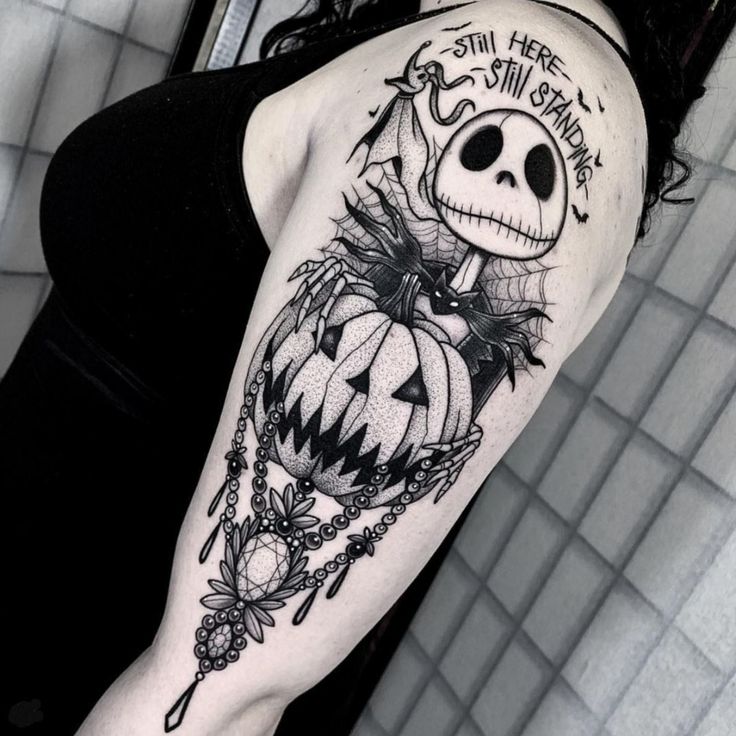

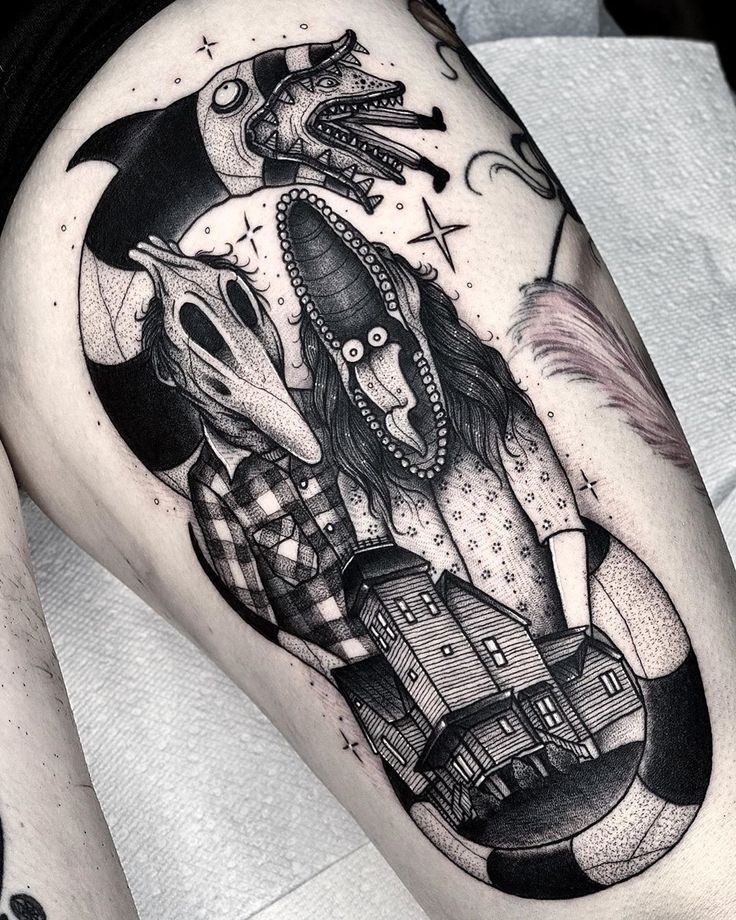





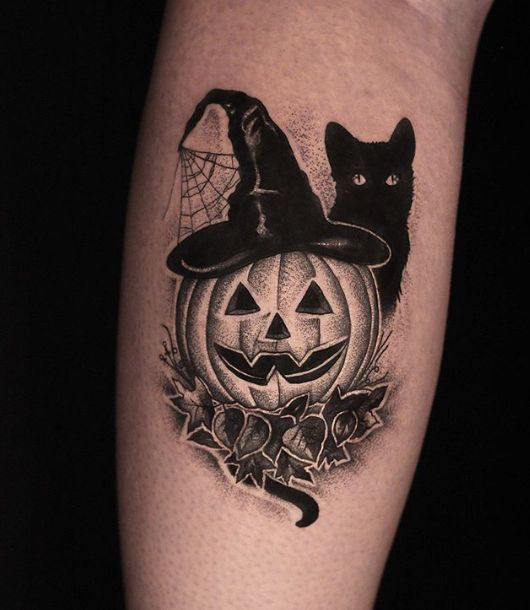

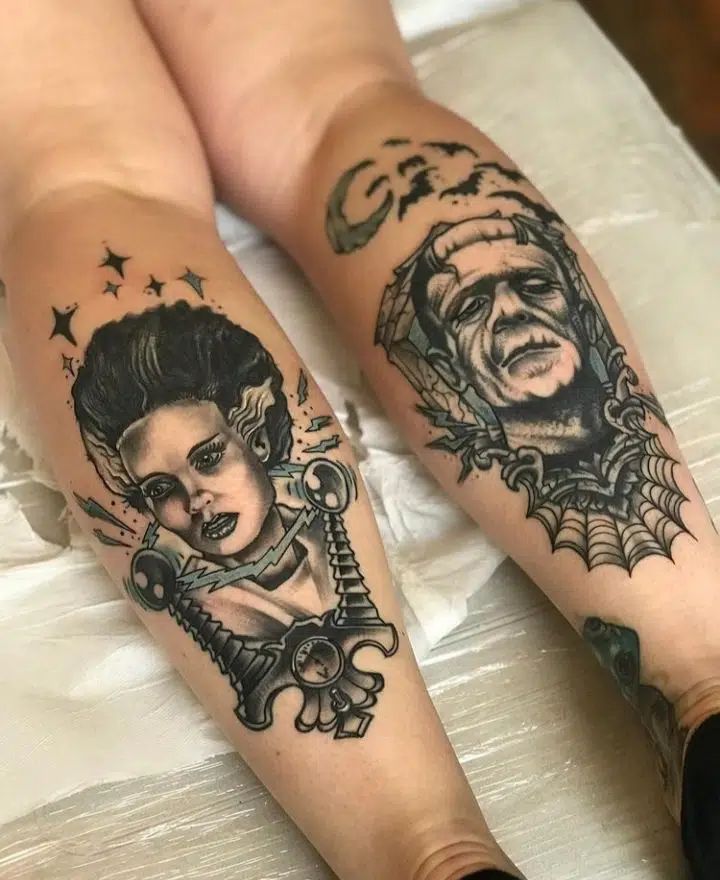





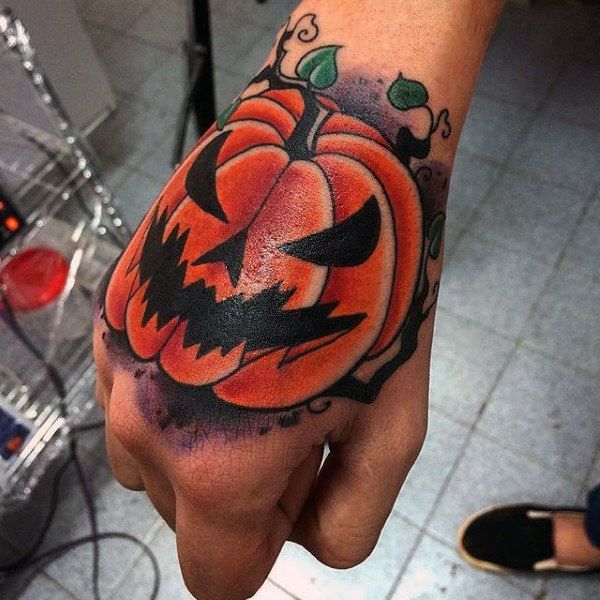













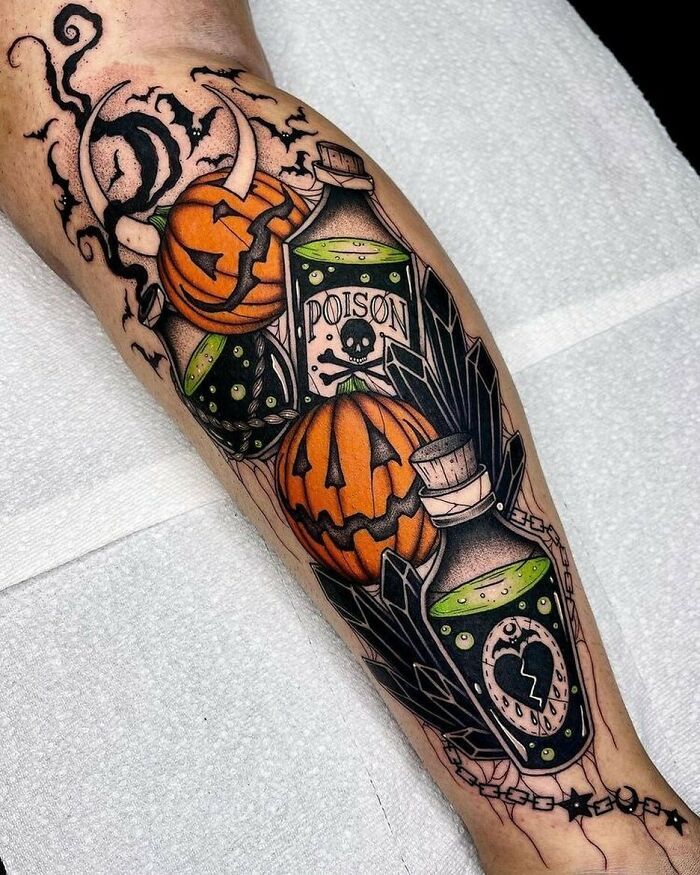







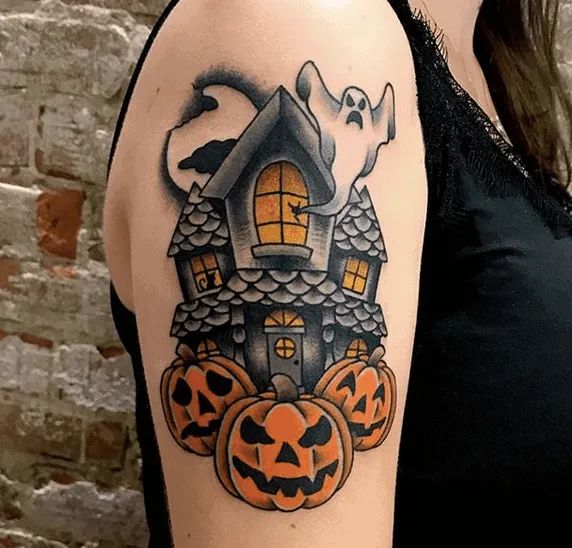



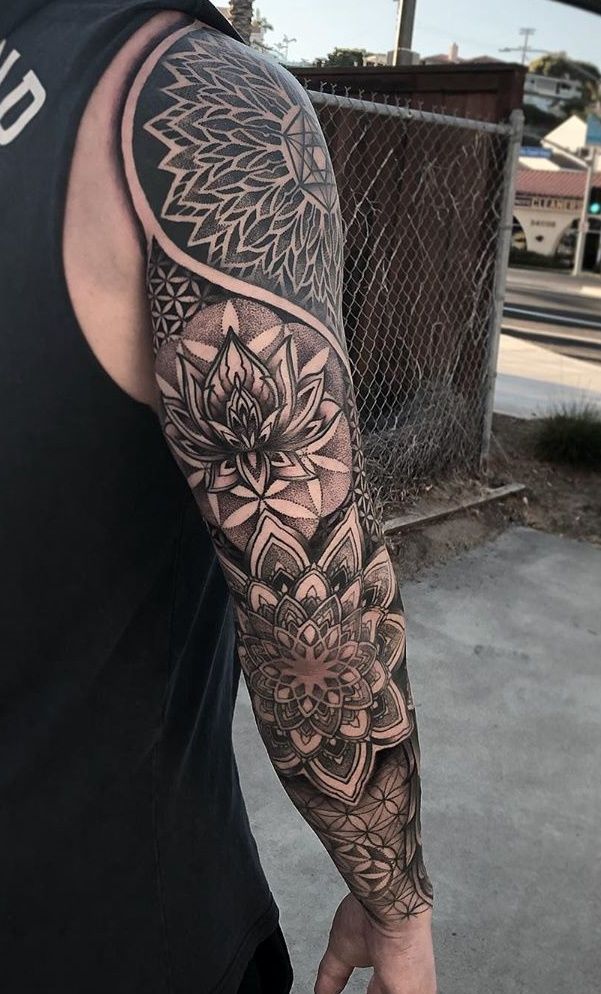





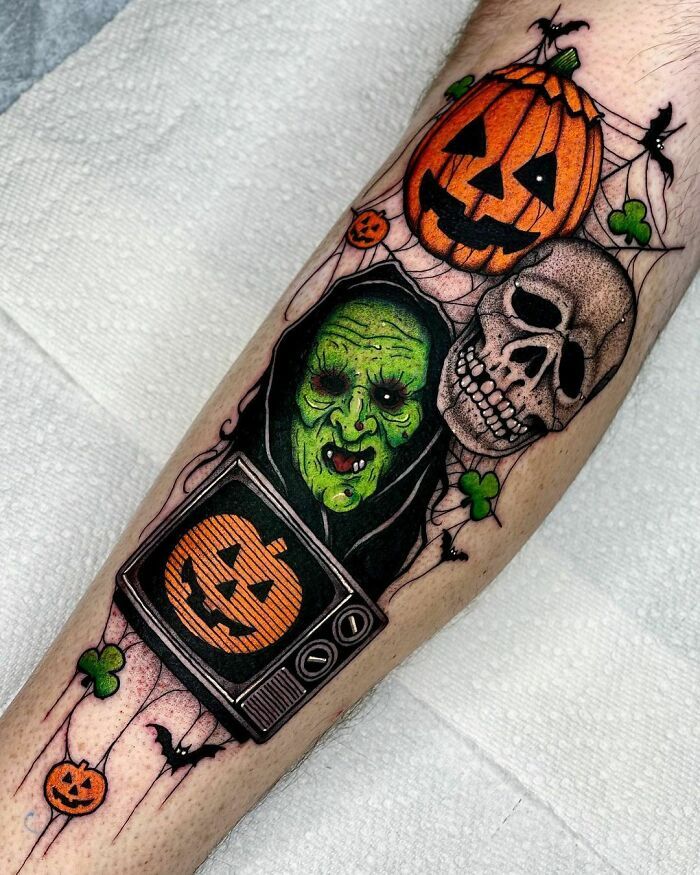











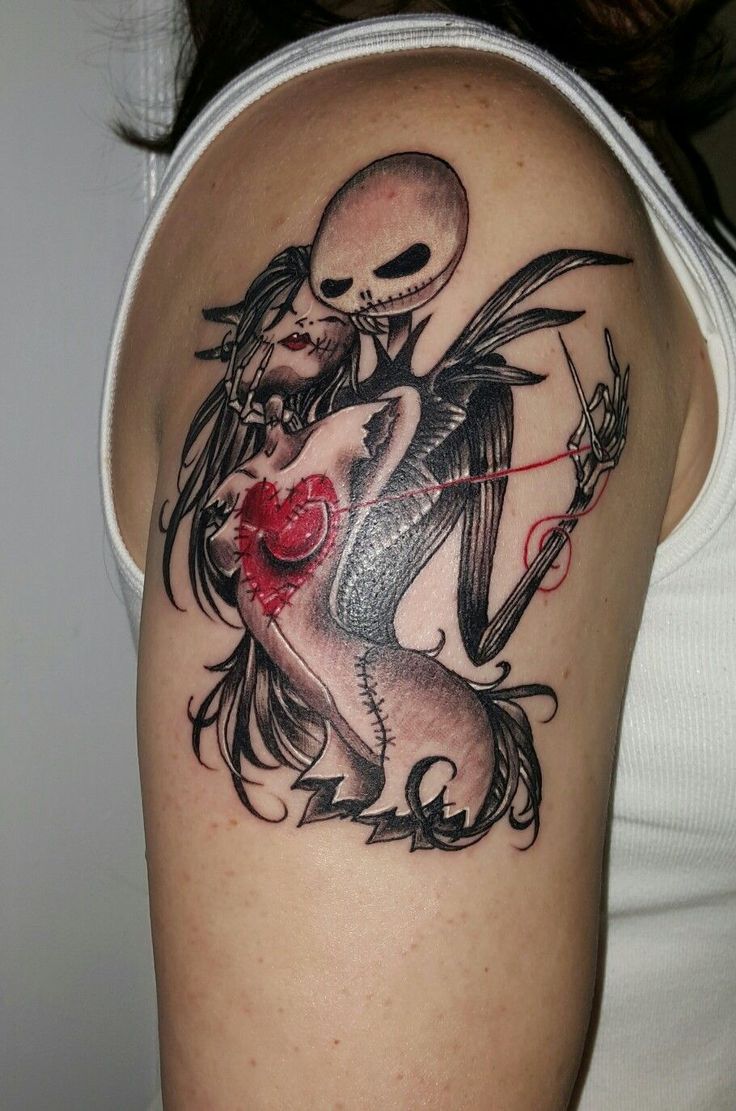

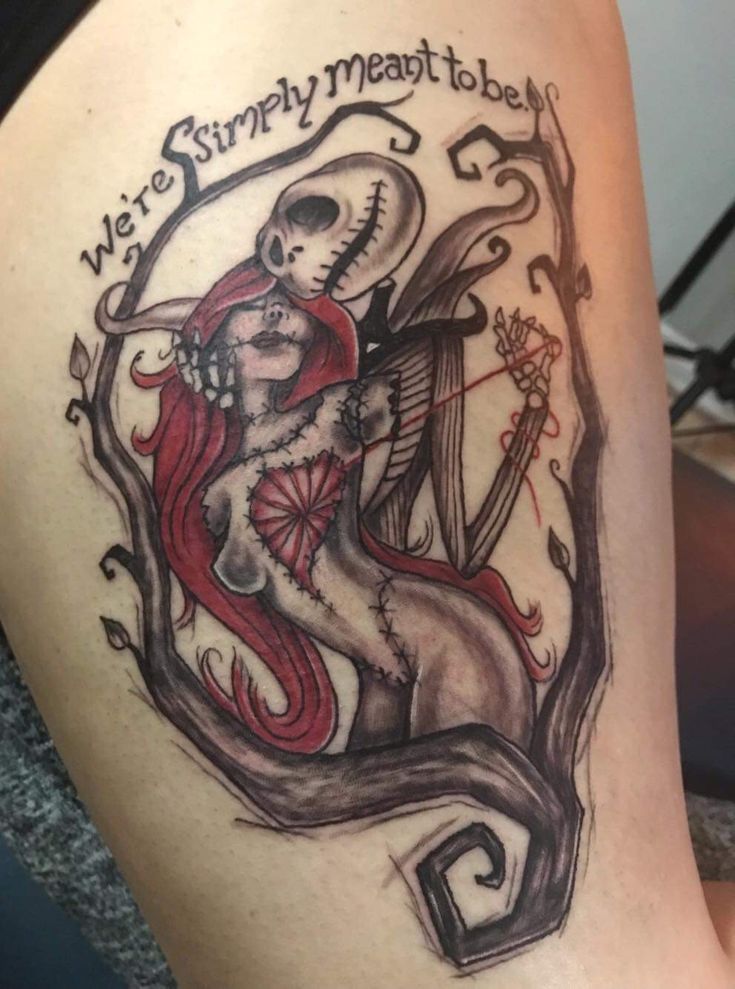













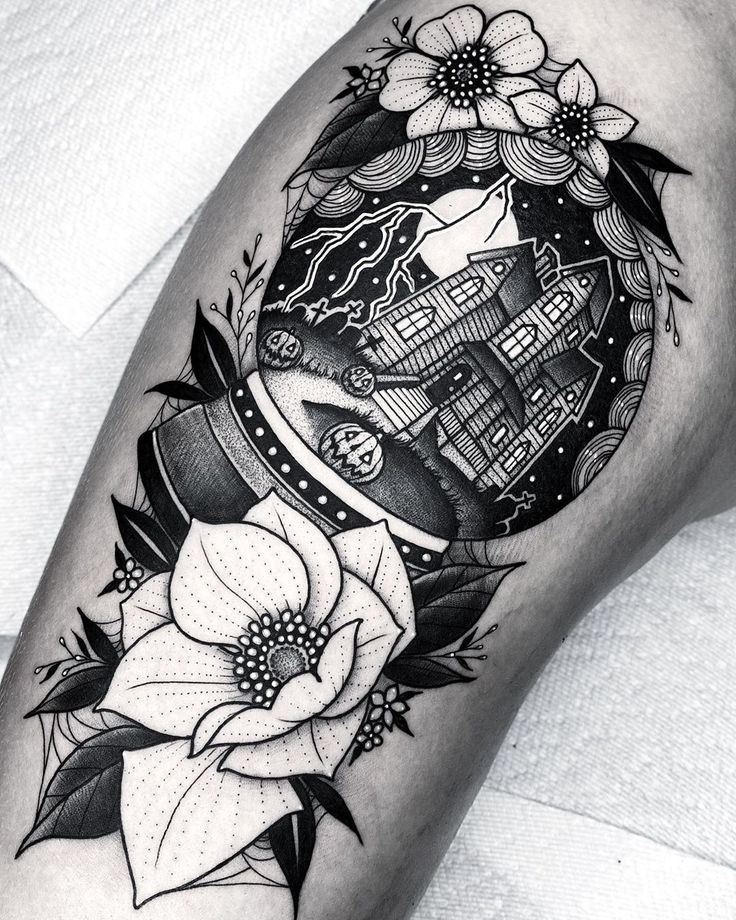

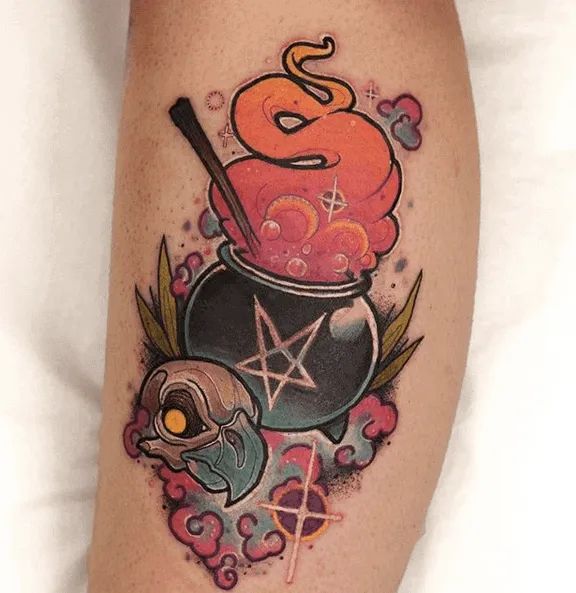



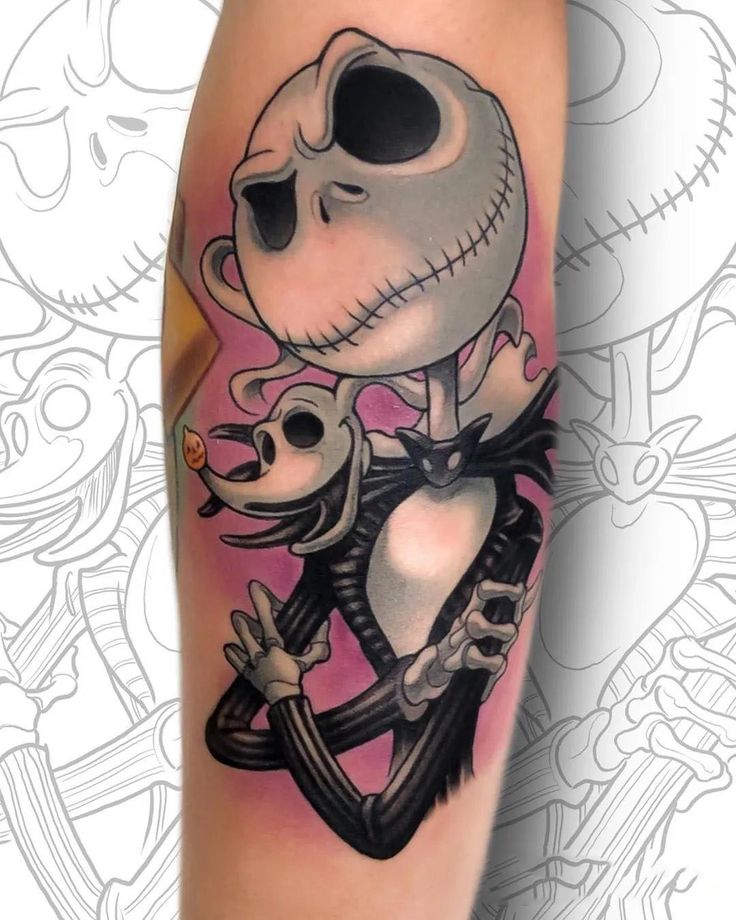

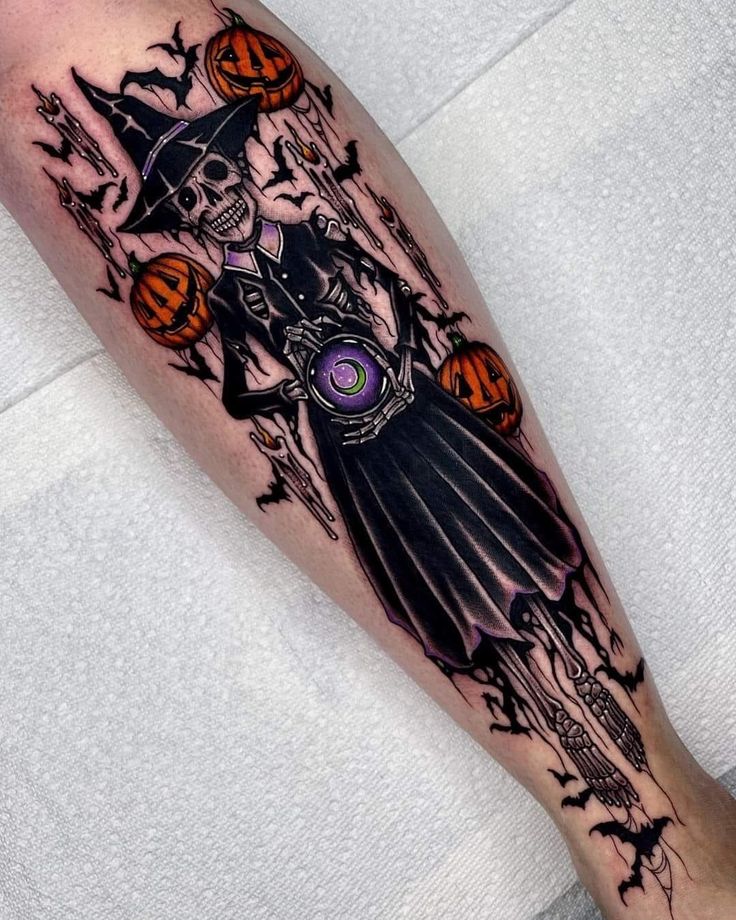






























Comentarios